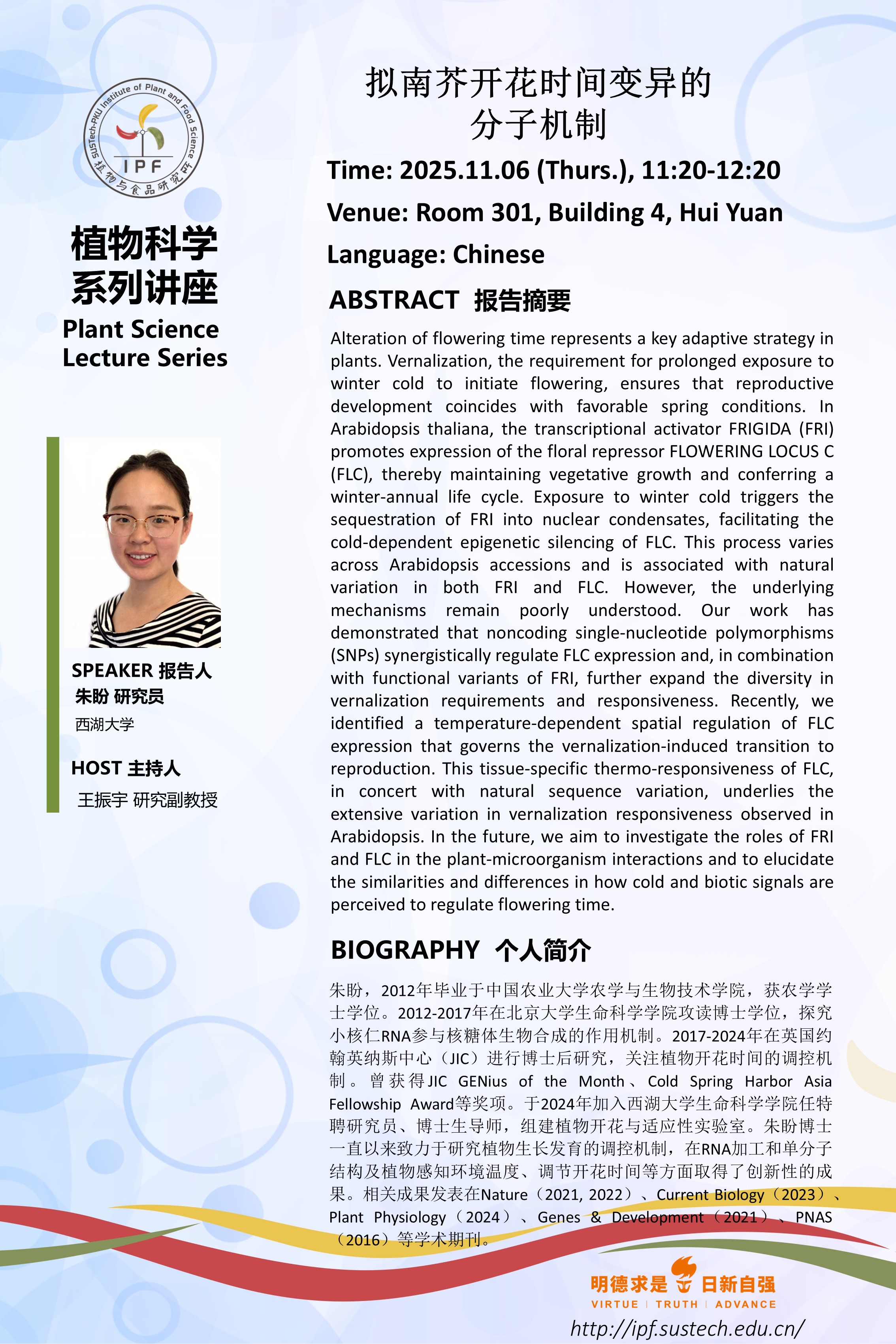
主讲人: 朱盼 研究员(西湖大学)
时间: 11月6日(周四)11:20-12:20
地点:
题目:拟南芥开花时间变异的分子机制
主讲:朱盼 研究员(西湖大学)
时间:11月6日(周四)11:20-12:20
会议地点:慧园4栋301
个人简介:朱盼,2012年毕业于中国农业大学农学与生物技术学院,获农学学士学位。2012-2017年在北京大学生命科学学院攻读博士学位,探究小核仁RNA参与核糖体生物合成的作用机制。2017-2024年在英国约翰英纳斯中心(JIC)进行博士后研究,关注植物开花时间的调控机制。曾获得JIC GENius of the Month、Cold Spring Harbor Asia Fellowship Award等奖项。于2024年加入西湖大学生命科学学院任特聘研究员、博士生导师,组建植物开花与适应性实验室。朱盼博士一直以来致力于研究植物生长发育的调控机制,在RNA加工和单分子结构及植物感知环境温度、调节开花时间等方面取得了创新性的成果。相关成果发表在Nature(2021, 2022)、Current Biology(2023)、Plant Physiology(2024)、Genes & Development(2021)、PNAS (2016)等学术期刊。
报告摘要:Alteration of flowering time represents a key adaptive strategy in plants. Vernalization, the requirement for prolonged exposure to winter cold to initiate flowering, ensures that reproductive development coincides with favorable spring conditions. In Arabidopsis thaliana, the transcriptional activator FRIGIDA (FRI) promotes expression of the floral repressor FLOWERING LOCUS C (FLC), thereby maintaining vegetative growth and conferring a winter-annual life cycle. Exposure to winter cold triggers the sequestration of FRI into nuclear condensates, facilitating the cold-dependent epigenetic silencing of FLC. This process varies across Arabidopsis accessions and is associated with natural variation in both FRI and FLC. However, the underlying mechanisms remain poorly understood. Our work has demonstrated that noncoding single-nucleotide polymorphisms (SNPs) synergistically regulate FLC expression and, in combination with functional variants of FRI, further expand the diversity in vernalization requirements and responsiveness. Recently, we identified a temperature-dependent spatial regulation of FLC expression that governs the vernalization-induced transition to reproduction. This tissue-specific thermo-responsiveness of FLC, in concert with natural sequence variation, underlies the extensive variation in vernalization responsiveness observed in Arabidopsis. In the future, we aim to investigate the roles of FRI and FLC in the plant-microorganism interactions and to elucidate the similarities and differences in how cold and biotic signals are perceived to regulate flowering time.